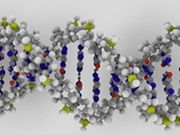Doubts about whether modern humans and Neanderthals interbred
30 Aug 2012
New research raises questions about the theory that modern humans and Neanderthals at some point interbred, known as hybridisation. The findings of a study by researchers at the University of Cambridge suggests that common ancestry, not hybridisation, better explains the average 1-4 per cent DNA that those of European and Asian descent (Eurasians) share with Neanderthals. It was published today, 13 August, in the journal PNAS.
 In the last two years, a number of studies have suggested that modern humans and Neanderthals had at some point interbred. Genetic evidence shows that on average Eurasians and Neanderthals share between 1-4 per cent of their DNA. In contrast, Africans have almost none of the Neanderthal genome. The previous studies concluded that these differences could be explained by hybridisation which occurred as modern humans exited Africa and bred with the Neanderthals who already inhabited Europe.
In the last two years, a number of studies have suggested that modern humans and Neanderthals had at some point interbred. Genetic evidence shows that on average Eurasians and Neanderthals share between 1-4 per cent of their DNA. In contrast, Africans have almost none of the Neanderthal genome. The previous studies concluded that these differences could be explained by hybridisation which occurred as modern humans exited Africa and bred with the Neanderthals who already inhabited Europe.
However, a new study funded by the BBSRC and the Leverhulme Trust has provided an alternative explanation for the genetic similarities. The scientists found that common ancestry, without any hybridisation, explains the genetic similarities between Neanderthals and modern humans. In other words, the DNA that Neanderthal and modern humans share can all be attributed to their common origin, without any recent influx of Neanderthal DNA into modern humans.
Dr Andrea Manica, from the University of Cambridge, who led the study said: ''Our work shows clearly that the patterns currently seen in the Neanderthal genome are not exceptional, and are in line with our expectations of what we would see without hybridisation. So, if any hybridisation happened – it's difficult to conclusively prove it never happened – then it would have been minimal and much less than what people are claiming now.''
Neanderthals and modern humans once shared a common ancestor who is thought to have spanned Africa and Europe about half a million years ago. Just as there are very different populations across Europe today, populations of that common ancestor would not have been completely mixed across continents, but rather closer populations would have been more genetically similar to each other than populations further apart.
There is extensive genetic and archaeological evidence that population in Africa were 'structured'; in other words, different populations in Africa only had limited exchange through migration, allowing them to remain distinct from each other both in terms of genetics and morphology.






























